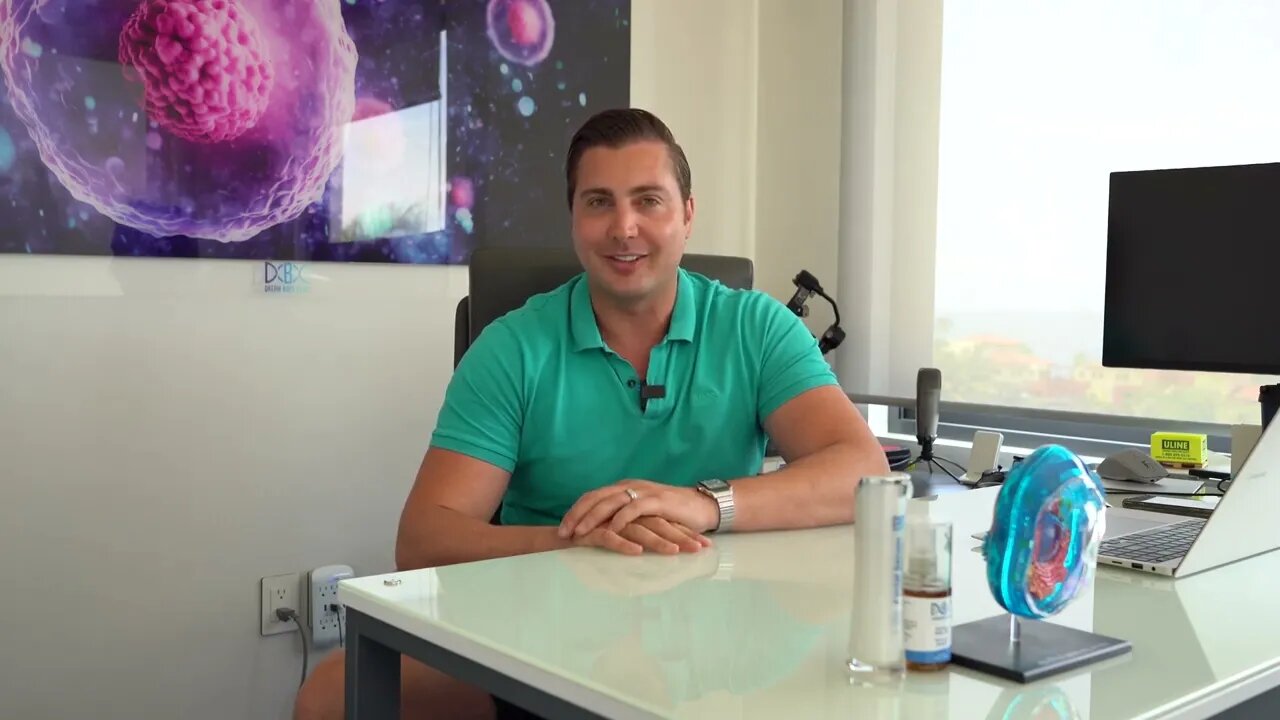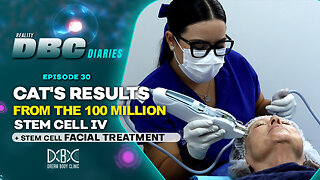Premium Only Content

What are Stem Cells and Which are Best for Treatments?
www.dreambody.clinic (833) 445-9089 info@dreambodyclinic.net facebook.com/dreambodyclinic
Hello, this is Josh dream body clinic. And today we're going to get into some details about the central stem cells, what they are, and from there. So a big starting point for stem cells is confusion. Let's see, what is the stem cell, right? So there's three different primary types of stem cells that most people know about.
I've heard about, there's embryonic stem cells. Now, these are the stem cells that come from aborted fetuses, aborted embryos. They're the ones that like have the most contribution. They also have the most potential because an embryonic stem cell, the hope was since they can turn into any cell type in the body, you have about 260 different types of cells in the body that you can use those.
And then turn them into the cells needed for specific areas, like say, if your heart was failing, the hope was they could turn into heart cells, or if your kidneys were failing, they could turn into kidney cells. Unfortunately, it was found that the state of California ended up spending about 2 million in research and basically came up with that it did not work as expected.
You know, there was a lot of controversy back when Bush was in office about this. He never banned stem cells, even though people think that. You just, as advisors told me, I didn't think it would work and they shouldn't fund it. And that ended up being actually a reality. So those aren't usable. We do not use those.
We don't want those. Plus they tend to become tumors because they want to become babies. So not a good option. There are a few clinics out there saying that they're using embryonic stem cells, but it appears that they're actually using, it's more of like a derivative, like an encyclical stem cell from that cell line.
Which is why they're usable and don't have issues. So embryonic stem cells, you don't want, then there's somatic polyethic stem cells. These are the stem cells and bone marrow. They [00:02:00] create retinal blood cells. Um, that's also not really great for type of treatments. We not good for our tissues, not good for joints because white blood cells can only heal in fibrosis, which is scar tissue.
And we don't want that, uh, scar tissue ends up being like a patch up job. And then your regular healing mechanisms, like the growth factors and cytokines and such in the bloodstream can't get past that and they can't heal the tissue. So you end up with more of a problem, temporary fix might not get worse, but it's not going to get fully healed either.
Um, those are really only used in blood borne cancers. In fact, that's a history of them. The first step. So there were out there were bone marrow, uh, transfers for patients with things like leukemia, and they work really well for that. But the problem is the, the donor receives that DNA from, or [00:03:00] the recipient receives the DNA from the donor.
And in fact, it's really crazy. Investigators have found it. The recipient actually takes on the DNA of the donor and over time, if they commit a crime, they will actually show up if there was any evidence as the donor, really crazy stuff. But, um, you know, that's why a lot of people get confused. I think, Oh, is DNA transferred in stem cell therapies?
Yes. With, uh, this hematopoietic. Yes. With central stem cells, which we're into now and we use, there is no DNA transfer. So the third type of central stem cells exist in your system already. They live on your capillaries. They're called pericytes. Look like a little octopus wrapped around a tube, but it's the capillary.
And when you're injured, they come off, they go to the inflamed injured area, and they guide the repair. So they're not really a stem cell in the body. In the lab, they are. In the lab was Dr. Arnold Kaplan of the early 90s found. It can turn them into adipocytes, chondrocytes, um, osteoblasts and chondrocytes.
And those are great, but they then have the donor's HLA markers. So if you use my own, you can use them, but if they're coming from a donor, um, you can't because the HLA markers don't match. So there's a lot of people out there talking about chondrocytes right now and fixing cartilage. Unless they're getting it from the donor.
It's not a viable option to be eliminated. So the same couple of stem cells go through the system and they work via the Peregrine effect. This means the signals they send out. That's what does the magic. Think of it like an orchestra. You've got a conductor telling you where to go, what to do in time.
That's what the second most stem cell does. It is like the manager on the construction site. It's going. And building the house, but telling everyone what to do to build it. It's not building itself. It's like the contract. [00:05:00] So it's where it gets confusing.
Dr. Kaplan wishes he could rename them medicinal signaling cells
-
 16:15
16:15
Dream Body Clinic
25 days agoDBC Diaries Ep 30: Cat's Results from the 100 million stem cell IV + Stem Cell Facial Treatment
851 -
 12:19
12:19
Tundra Tactical
5 hours ago $0.19 earnedDaniel Penny Beats Charges in NYC Subway Killing
7.39K3 -
 29:53
29:53
MYLUNCHBREAK CHANNEL PAGE
1 day agoUnder The Necropolis - Pt 1
67.3K41 -
 2:00:10
2:00:10
Bare Knuckle Fighting Championship
3 days agoCountdown to BKFC on DAZN HOLLYWOOD & FREE LIVE FIGHTS!
32.1K2 -
 2:53:01
2:53:01
Jewels Jones Live ®
1 day agoA MAGA-NIFICENT YEAR | A Political Rendezvous - Ep. 103
55.7K20 -
 29:54
29:54
Michael Franzese
9 hours agoCan Trump accomplish everything he promised? Piers Morgan Article Breakdown
77.6K45 -
 2:08:19
2:08:19
Tactical Advisor
13 hours agoThe Vault Room Podcast 006 | Farwell 2024 New Plans for 2025
159K11 -
 34:12
34:12
inspirePlay
1 day ago $4.66 earned🏆 The Grid Championship 2024 – Cass Meyer vs. Kelly Rudney | Epic Battle for Long Drive Glory!
65.6K8 -
 17:50
17:50
BlackDiamondGunsandGear
10 hours ago $0.24 earnedTeach Me How to Build an AR-15
41.3K4 -
 9:11
9:11
Space Ice
1 day agoFatman - Greatest Santa Claus Fighting Hitmen Movie Of Mel Gibson's Career - Best Movie Ever
103K44